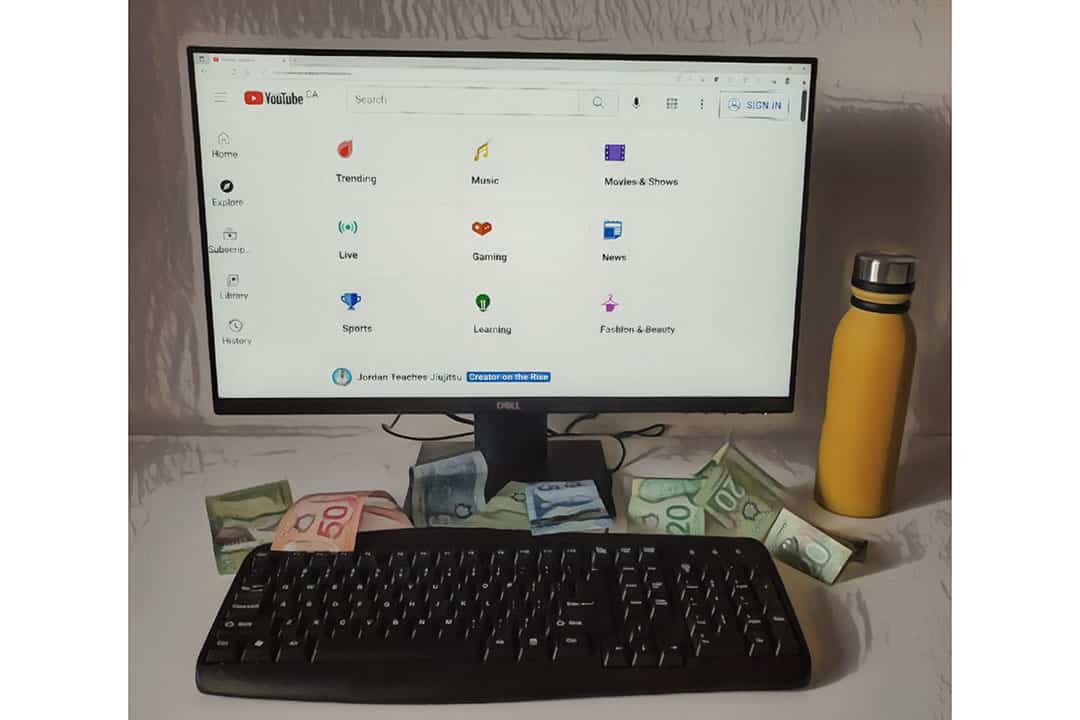Influencers are becoming increasingly prevalent in society, with a number of these influencers finding their voices on platforms such as YouTube. U of T is sprawling with a number of students who are ready to share their experiences about applying to U of T, moving into their dorms, or even just what their days look like as students.
The Varsity sat down with Richard Han, a third-year Rotman Commerce student who also runs a successful YouTube channel. On his channel, Han takes prospective and current students through his days at U of T. He has also uploaded a number of videos about his application process and about getting into U of T.
Influencing the U of T community
Han explains that he started his Youtube channel in his first year at U of T. He wanted to share his experiences as a first-year student and share information of student life at U of T. When asked about his inspiration to start the channel, he told The Varsity, “I [thought] it [would] be fun for me to show my life and help out students that were in the same situation [that] I was when I was applying.”
Han looked up to influential university YouTubers who built their platforms by sharing a part of their lives on YouTube. “So I guess it was both pursuing my dream and to also help out upcoming future U of T students,” he added.
Han considers being a content creator as a hobby. “I don’t do this because I have to, I do it because I like to do it,” he said. “I never had trouble balancing between my life and content creation, just because I saw it more as a way to destress rather than workload, if that makes sense.”
As someone studying marketing, he also finds that he can apply the theory he learns in his classes to grow his channel — something that helps him with recruitment for internships as well, such as being able to answer questions about applying these theories to real life circumstances.
The logistics of content creation
As a content creator, one of the biggest challenges he faces is around what music he can use. YouTube’s strict rules about copyrighted music often pose a problem, whenever the best music he can find is copyrighted. He finds that when he runs into this challenge, he just turns off monetization in the video in question so he can still use the music he wants.
Although this impacts his viewership, due to YouTube’s algorithm, he finds that this is the best approach. “I will always take quality over money if I think that using a copyrighted [music] in a video makes the quality of the video better,” he said.
Han also touched upon making money as a YouTuber. In order to make money, a creator needs 1,000 subscribers and to have had viewers watch 4,000 hours of their content in the past 12 months. They also need to be located in a country where the YouTube Partner Program is active, have no community guidelines violations on their account, and have a linked AdSense account.
If they meet this criteria, they can apply to the YouTube Partner Program. Once accepted, creators can earn money through ad revenue, channel memberships, merch, super chats during livestreams, and YouTube Premium. While he did not disclose the amount that he makes from his channel, Han said that it is enough to cover his sneaker expenses every month.
Han told The Varsity that, as a content creator who creates vlogs about his life in university, he has received requests from a variety of sponsors, including an app development company and a desk company. The process of sorting out the logistics of a brand deal usually takes place over email. However, Han doesn’t take every deal that comes his way — he makes sure the company matches his philosophy and the product is something that his audience will be able to relate to.
Han made sure to emphasize that his channel is meant to feature his life, in which his experiences as a student at U of T play a large part. In the future, he hopes to feature videos where he talks about whatever else is relevant to that time in his life.
For now, Han enjoys his experience vlogging about his life at U of T. For him, he said, some of the most rewarding moments have been when other students have come up to him to talk about his content, and he’s been able to see exactly how it inspired or helped them.
— With files from Seher Singh


